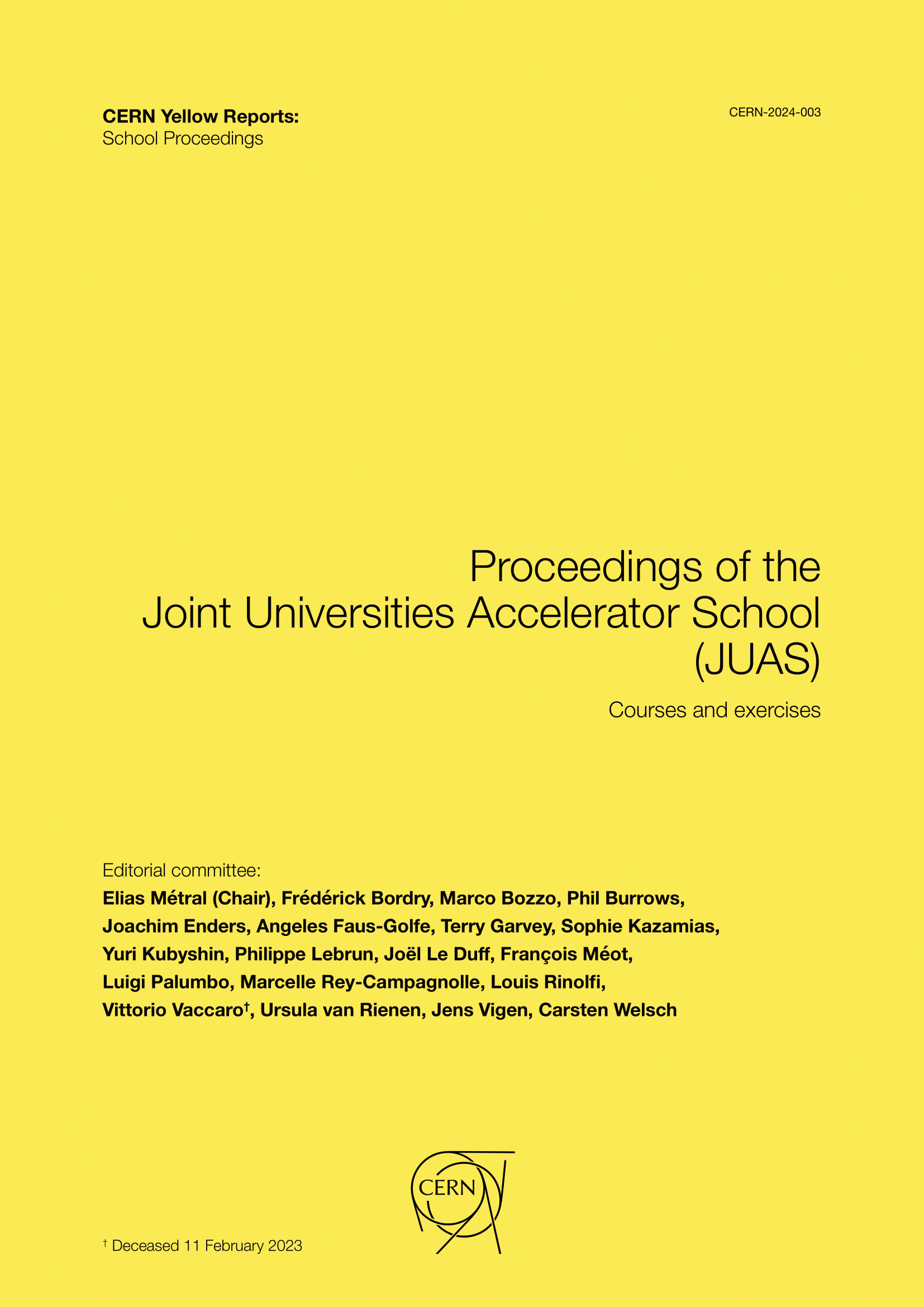II.18 — Life-cycle and operability of particle accelerators
DOI:
https://doi.org/10.23730/CYRSP-2024-003.1853Abstract
Particle accelerators are used to generate particle beams for different kinds of use. Operability must be easy and simple for an industrial version with a high Technological Readiness Level (TRL), or complex and critical for large single accelerators designed for new research objectives. Our present text mainly focuses on this second type of specific machines and facilities. Beyond associated physics and technologies considerations, they are systems and facilities to be designed, constructed, and used for the expected purposes. The particle accelerators devoted to research have generally a long life (> 20 years) and history shows that their lifecycles are unique, and generally neither smooth nor easy. Many good practices in project management and operation of particles accelerators can be found in the existing fields of building construction, or complex industrial systems (aeronautic, military) or other large scientific instruments (e.g. satellite). But they have their particularities: the specificities of the expected output (the particle beam, a complex multi-parametric physical object), the technologies (ion sources, RF, vacuum, etc.), the specific risks (direct or remnant radiations, electricity, etc.), the high expectation for performances or innovation, the usual associated international community. In the first section, we will describe the different classic stages of the lifecycle of a particle accelerator, in the second section we will focus on the operations stage with details on the reliability. In the third section, we will evoke some of the current trends: artificial intelligence, sustainability, and major cost of energy.
Downloads
Published
Issue
Section
License

This work is licensed under a Creative Commons Attribution 4.0 International License.
Authors who publish with this publication agree to the following terms:
- CERN retains copyright and publishes the work licensed under the Creative Commons Attribution License 4.0 that allows others to share the work with an acknowledgement of the work's authorship and initial publication in this series.
- Authors are able to enter into separate, additional contractual arrangements for distribution of the published version of the work (e.g., post it to an institutional repository or publish it in a book), with an acknowledgement of its initial publication in this series.
- Authors are permitted and encouraged to post their work online (e.g., in institutional repositories or on their website) prior to and during the submission process, as it can lead to productive exchanges, as well as earlier and greater citation of published work (See The Effect of Open Access).

